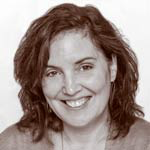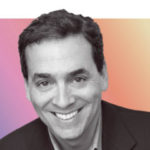 You spend most of the year looking for them, and a sizable chunk of your budget paying for them. You rely on them to generate buzz and lure attendees. You have access to more of them than ever before — ex-presidents, former sports stars, authors, entrepreneurs, innovators, disruptors, and motivators.
You spend most of the year looking for them, and a sizable chunk of your budget paying for them. You rely on them to generate buzz and lure attendees. You have access to more of them than ever before — ex-presidents, former sports stars, authors, entrepreneurs, innovators, disruptors, and motivators.
But are you finding the very best speakers for your events? And are you maximizing your investment in them?
The Hunt: Finding and Choosing Speakers
A stirring keynote speaker can inject your meeting with energy, help build its credibility, and leave attendees with powerful memories — and can even mean the difference between who registers and who stays home. When it comes to finding that magical keynote, planners in our survey rank “thought-provoking,” “insightful,” and “inspirational” as highly sought after qualities. “People always want something new and fresh,” Emily Houg, CMP, principal of Echo Events in Tacoma, Washington, said in an interview.
How about new, fresh — and famous? Forty-six percent of planners say it’s “somewhat important” to land a celebrity keynote speaker for their meeting. “Attendees are flooded with conference opportunities,” one survey respondent wrote. “A celebrity speaker often helps ‘lure’ them to ours.”
John Truran, senior vice president of Keppler Speakers, headquartered in Arlington, Virginia, fields such requests regularly, and sometimes prompts planners for more specifics. “‘We need a motivational speaker’ is the classic line,” Truran said. “What do you mean by that? Do you want a leadership speaker? Do you want a sports person considered to be motivational? There are so many layers and niches, and our job is to peel back the onion and find out what the planner and the organization really wants, what their goals really are.”
Brian Palmer, CMM, president and owner of Chicago-based National Speakers Bureau, agrees. “‘I want a wow factor’ is one of my least favorite phrases,” he said. “It can work against a meeting. Often, for the people planning an event, their goal is that they want everyone to be happy and they want there to be a standing ovation, and that’s their measure of success — when, in fact, the most effective speaker might leave people rather subdued and uncomfortable at the end.”
 Whether planners are in the market for a big wow or thoughtful silence, they consider depth of subject knowledge and a connection to the audience’s profession to be crucial, according to the survey. “For our meeting — that focuses on top-quality continuing education — the speakers represent the linchpin of the entire event,” said Sylvia Ratchford, executive director of the Hinman Dental Society. For 20 years, Ratchford has planned the Thomas P. Hinman Dental Meeting — with roughly 22,000 attendees — at the Georgia World Congress Center in Atlanta. She hires 60 to 70 speakers for the event. “Their expertise, their presentations, the ease with which we can work with them, all combine for great impact on the event’s success,” Ratchford said. “For the clinical speakers, expertise and reputation are paramount. For the keynote session, we look for a combination of the two.”
Whether planners are in the market for a big wow or thoughtful silence, they consider depth of subject knowledge and a connection to the audience’s profession to be crucial, according to the survey. “For our meeting — that focuses on top-quality continuing education — the speakers represent the linchpin of the entire event,” said Sylvia Ratchford, executive director of the Hinman Dental Society. For 20 years, Ratchford has planned the Thomas P. Hinman Dental Meeting — with roughly 22,000 attendees — at the Georgia World Congress Center in Atlanta. She hires 60 to 70 speakers for the event. “Their expertise, their presentations, the ease with which we can work with them, all combine for great impact on the event’s success,” Ratchford said. “For the clinical speakers, expertise and reputation are paramount. For the keynote session, we look for a combination of the two.”
For 70 percent of planners in our latest Convene ePanel survey, keynoters are found through word of mouth. “I sometimes joke that our biggest competitor is ‘Joe Down the Hall’ who just came back from a conference,” Palmer said. “People, I think, take comfort in hearing about a speaker from somebody whose opinion they know and trust.”
For their part, Palmer, Truran, and other speaker-bureau executives are always on the hunt. “We spend a great deal of time going to see people live and watching video,” Palmer said, “so that we have discerned who’s very good and who’s excellent.”
Does it matter if those speakers represent a variety of backgrounds, ages, and races? Truran thinks so. “Planners want something that is hard-hitting,” he said, “someone that might be a little disruptive, might challenge conventional wisdom, is a darn good presenter, has humor, knows how to hold the audience, and is not a 60-year-old white man in a suit. People need — people want — to mirror their audiences.”
Yet planners are close to evenly split on diversity. According to our survey, 47 percent choose their lineup based on age and gender diversity — meaning 53 percent don’t. “It’s very important for me that my presenters can represent and appeal to all attendees’ ethnicities, so that everyone can relate to someone and feel welcome,” one survey respondent wrote. Another respondent noted: “The attendees can’t receive a diverse cadre of ideas from a homogenous group of speakers. If there is no diversity, … you are compromising their educational experience.”
 Timothy Mathy, Denver-based senior partner of SpeakInc., says his bureau is always on the lookout for speakers who break the mold. “If [a speaker] is not a white male,” he said, “especially if they’re female — without a doubt, we’re looking at those more and more.”
Timothy Mathy, Denver-based senior partner of SpeakInc., says his bureau is always on the lookout for speakers who break the mold. “If [a speaker] is not a white male,” he said, “especially if they’re female — without a doubt, we’re looking at those more and more.”
And then there are planners who don’t expressly seek a diverse speaker lineup — because, in their words, content is king. “Presenters are picked for their knowledge, not their ethnicity or gender,” according to one survey respondent. But while 51 percent of survey respondents hire the “best” speaker, regardless of gender, that doesn’t include Alexandra Carvalho, CMP, senior event consultant for Kaiser Permanente Event Marketing in Oakland. “I firmly believe,” she told Convene, “that whoever is delivering your content must represent the diversity of culture within your organization.”
By many accounts — from the planners, bureaus, and speakers that Convene spoke with — there is still a dearth of available speaking talent from diverse backgrounds. “Keeping in mind that often I’m coming to conferences where there is a technology focus, I find that there typically are not any speakers that look like me. It’s actually pretty rare,” said Crystal Washington, an author and speaker on social-media and technology trends, who notes that many African-American speakers tend to work in the motivational, rather than the informational, space. “Oftentimes, I am the diversity. It is not unusual for me to be the only woman and the only person of color in a speaker lineup. Sometimes I feel like I am the diversity person that hits all the buttons — I’m brown, I’m a woman, and I’m a Gen Y. Boom.”
 “I think that diversity has to be part of the mix,” said Stacy Tetschner, CAE, FASAE, who is CEO of the National Speakers Association. “I think all planners are looking at it that way, but it can’t be your primary driver. Or else you give up the content side in terms of diversity. But if you only put all white guys up there, those that are ‘male, pale, and stale,’ you don’t get maybe the best. Many of the people in your audience want to be able to look at your program and see themselves somewhere, so that they don’t feel like outsiders.”
“I think that diversity has to be part of the mix,” said Stacy Tetschner, CAE, FASAE, who is CEO of the National Speakers Association. “I think all planners are looking at it that way, but it can’t be your primary driver. Or else you give up the content side in terms of diversity. But if you only put all white guys up there, those that are ‘male, pale, and stale,’ you don’t get maybe the best. Many of the people in your audience want to be able to look at your program and see themselves somewhere, so that they don’t feel like outsiders.”
The Money: Speaker Budgets and Fees
Often, a sizable wedge of a meeting’s budget is set aside for speakers — and, according to 61 percent of our survey respondents, that wedge has stayed the same over the last two years. (According to the survey, 21 percent of planners have a speaker budget of under $5,000, while 28 percent draw on $50,000 or more.) Meanwhile, organizations are spending more on celebrity speakers. “The average range right now [for a keynote] is between $15,000 and $25,000,” said Carvalho, who notes that, like many planners, she has seen her budget stay steady as speaker fees have increased. “But I have paid up to $50,000. Definitely, speaker fees have risen.”
That’s true at a certain level, according to Palmer. “The top of the market has really grown,” he said, “because events people are looking to make a bigger splash with their events and often use the appearance of somebody well known at their event to help create that splash, get media attention, get a lot of eyes on their meeting. They seem to be willing to spend more money for somebody famous, and there are a lot more people of note who are speaking. It’s interesting to see the disparity between some of the top speakers and some of the lower-paid speakers.”
 How can your static budget accommodate climbing speaker fees? Try passing over celebrity speakers in favor of subject-matter experts who may charge less. “In general, the fees for business speakers have stayed the same,” Truran said. “Where the fees have skyrocketed and have outpaced inflation are with the celebrities.”
How can your static budget accommodate climbing speaker fees? Try passing over celebrity speakers in favor of subject-matter experts who may charge less. “In general, the fees for business speakers have stayed the same,” Truran said. “Where the fees have skyrocketed and have outpaced inflation are with the celebrities.”
Or you can bite the bullet and spring for a big name — because, at least according to the bureaus, speakers are the cornerstone of your program. “The investment you make in a speaker is disproportionate to the investment in your meeting,” Truran says in a recent interview with the podcast “Through the Noise,” pointing out that while a keynote might eat up, say, $20,000 of a $1-million meeting budget, “the speaker can have an incredible impact on the overall meeting, the feeling of the meeting, the direction of the meeting, how [attendees] feel about the company.”
While the average highest amount paid for a keynote speaker is $32,269, according to our survey, one planner has paid $250,000, while the majority spend between $10,000 and $20,000. And that’s okay with planners: 77 percent feel that when they’ve shelled out, it was worth the cost.
The Connection: Speaker–Attendee Engagement
The pre-con process involves liaising with speakers — and there is an expectation that speakers should do their homework, too. “Knowledge of the audience is key,” Carvalho said, “and audience engagement is paramount in keeping attendees interested in content, and not focused on the wireless devices that can distract them.”
Palmer added: “I think one of the keys for a speaker is to really discern what the organization wants to achieve with the meeting. Why are they putting on this meeting? The objective isn’t to make people happy — very often, the objective is to make changes in the organization, or move people forward, or create different thinking.”
Some speakers relish that opportunity. “I really enjoy the process of someone picking me to speak,” motivational speaker Laura Schwartz said in an interview. “I listen to their objectives and make sure that I can fill those for them. I’m available to them to ask questions, and to come up with strategies together.”
Yet while planners may want more of speakers’ time in general, according to our survey, when it comes to the main event, they often actually want less of it onstage. Call it the “TED effect.” “TED has been extremely valuable for the industry as a whole, to make speaking cool,” Truran said. “In a way, it really helped propel the spreading of ideas as a storyteller.”
But the TED effect has also made audiences more comfortable with shorter sessions — and even led them to expect that. “UnMarketing” evangelist, author, and speaker Scott Stratten occasionally is given less time onstage by planners than he’d prefer, which he said can work against a meeting’s objectives. Yet Ratchford thinks shorter sessions are sometimes necessary for younger attendees. “We’re marketing to dental students and young dental professionals who are recently out of school and not accustomed to sitting in a three-hour lecture,” she said. “We’re building in more and more shorter courses. Granted, we have to be fair to the speaker and the subject matter to make sure it’s a reasonable amount of time for learning.”
Whether you’re making your sessions longer, shorter, or somewhere in between, if you use traditional exit surveys to determine their relative success, you might augment them by following your speakers’ lead: Scan Twitter. “If something is so good that [attendees] tell the world on Twitter, you know that resonated,” said Stratten, who uses the platform to gauge success as well as develop new material. If an idea trends on Twitter, he said, “That’s something I can focus on and say, ‘Okay, how much more can I drill down in this, and make sure I say it again?’”
And just because attendees are looking down at their phones during a session doesn’t mean they’re not engaged. “You might think someone is distracted, and they’re not,” Washington said. “They’re actually tweeting what you’re talking about. I’ve learned you really can’t judge what’s happening in the audience. The people that look like they’re mad at you will come up to you afterwards, give you a hug, and tell you it’s the best thing they’ve ever heard.”
Speakers are also being asked to interact more after their sessions. Eighty-one percent of planners in our survey schedule ancillary events, which speakers are usually happy to do. That post-session engagement can take myriad forms — from receptions to booth mingling, book signings, and Q&A. “For most of my groups,” Houg said, “the Q&A is really important for them.” Truran added: “The general feeling among more and more speakers is that, if travel works out, you have me for the day.”
Yet planners might not always realize speakers are up for that. “I think meeting planners underutilize speakers,” Mathy said. “Most of your professional speakers are happy to have a breakout right after the keynote.” Schwartz certainly is, and she’s surprised when planners don’t ask her to come early or stay later, since she tries to learn as much as she can about a group before she takes the stage. She said: “Some [planners] aren’t used to the speaker being so available for different parts of the event.”
Test Time
Earn one hour of CEU credit. Once you’ve finished reading this article, read the following material:
› “How Speakers Deliver Return on Attendance,” a white paper from the National Speakers Association, written by Chris Clarke-Epstein, CSP.
To earn CEU credit, visit pcma.org/convenecmp to answer questions about information contained in this CMP Series article and the additional material.
The Certified Meeting Professional (CMP) is a registered trademark of the Convention Industry Council.




